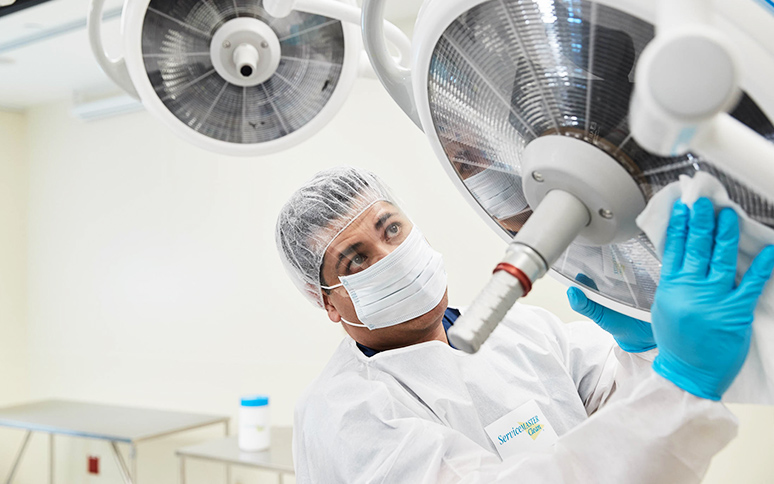Terminal Cleaning Procedures Exam Operating Isolation Rooms
Infection and the spread of disease is always a high risk within healthcare environments such as clinics and hospitals. Thankfully, understanding how to properly clean your facility goes a long way toward keeping your patients and staff healthy. But when it comes to your cleaning crew, do they know the differences in how to clean the various areas of your facility?
It turns out, the materials and methods for cleaning examination rooms may not be sufficient for cleaning other areas such as operating and isolation forms. Read on for essential information to share with your cleaning crew so they're aware of these important differences. By adhering to established safety standards and industry best practices, you can ensure that your facility is sanitary, comfortable and safe for everyone in it.
Cleaning, Sanitizing and Disinfecting
In a healthcare setting, it's important that your cleaning crew knows the difference between cleaning, sanitizing and disinfecting. Let's take a closer look at all three terms.
- Cleaning: When your crew cleans, they'll remove debris, organic substances and other visible soil directly from a variety of surfaces and objects. A mixture of soap or detergent with water should be used to scrub and wipe down surfaces to help remove germs. This process won't necessarily kill all pathogens, but it can certainly help to reduce the germ population and lower possible risk of infection.
- Sanitizing: The sanitizing process will lower the amount or number of bacteria to a safe level based on current standards. Note that sanitizing may not be sufficient for eliminating all viruses.
- Disinfecting: Hospital-grade disinfectants are intended to eliminate infectious agents, including bacteria, viruses and fungi, to varying degrees. Your cleaning crew should select a disinfectant suited to the level of disinfection needed given your facility's individual practice and type of care performed.
Cleaning Exam Rooms
The exam room is often the busiest room in your facility. Countless numbers of patients walk through the doors each day, so it's no wonder that this room is a hotbed for germs. Your cleaning crew should thoroughly wipe down doorknobs and railings using a disposable wipe soaked in disinfectant cleaner. High-touch areas such as chairs, and anything else commonly touched by patients and care providers – including hand sanitizer or soap dispensers – should also be wiped down. A hospital-grade disinfectant must be used. These special disinfectants won't leave a residue behind like bleach will, and most don't require any further rinsing or wiping after they've been applied.
Terminal Cleaning of Operating and Isolation Rooms
A patient is often most vulnerable to infection while undergoing a procedure in the operating room. Isolation rooms, meanwhile, are designated for patients who are currently infectious and need to be kept separate from visitors and other patients. For both rooms, your cleaning crew will need to take special care when they treat and clean these areas. A process known as terminal cleaning is used to ensure complete elimination of all pathogens from the environment, for the safety of the next patient as well as facility staff. Terminal cleaning is an intense disinfecting procedure that involves removing every detachable item in the room for disinfection and then properly disinfecting light fixtures, air ducts and all surfaces from the ceiling down to the floor. Make sure your cleaning crew understands the terminal cleaning process and how to properly disinfect these vital areas of your facility.
Keeping your healthcare facility properly cleaned is important, and only a qualified, knowledgeable crew should be entrusted with this critical function. ServiceMaster Clean specializes in providing exceptional and thorough enivornmental services for healthcare facilities of all types. We follow rigorous standards and develop tight protocols to ensure that every site we clean is safe for patients and employees alike. Contact us today to discover if our industry-leading capabilities can help you.







